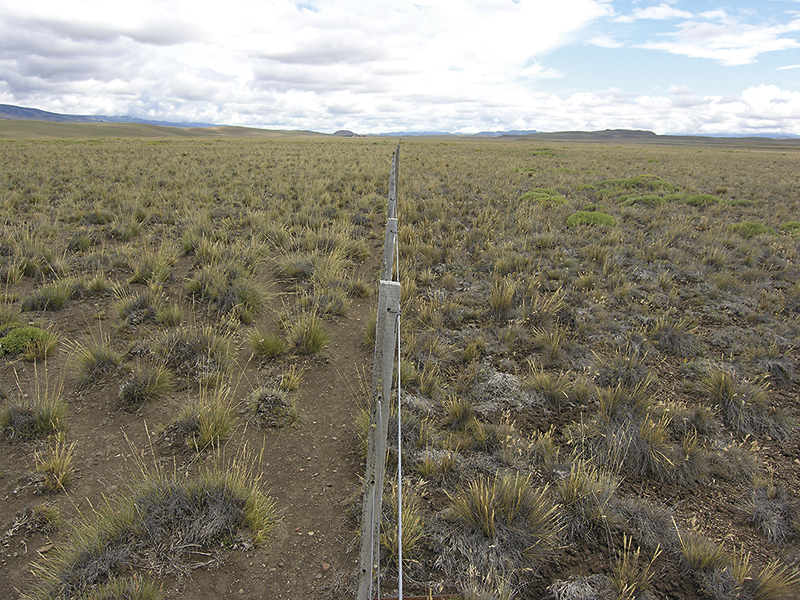How Flooding Impacts Livestock And Farm Operations

Table of Contents
Direct Impacts on Livestock
Flooding presents immediate and severe threats to the well-being of livestock. The consequences can range from immediate mortality to long-term health problems, significantly impacting farm profitability and sustainability.
Drowning and Hypothermia
Floodwaters pose a direct drowning risk, particularly for smaller animals like sheep, goats, poultry, and piglets. The force of the water can sweep them away, and even strong swimmers can succumb to exhaustion. Furthermore, prolonged exposure to cold floodwaters leads to hypothermia, a dangerous drop in body temperature that weakens animals and can be fatal. Loss of access to feed and clean drinking water exacerbates these problems, leading to further stress and vulnerability. A recent flood in Iowa, for example, resulted in the loss of over 2000 head of cattle due to drowning and hypothermia.
Disease and Infection
Contaminated floodwaters are breeding grounds for diseases. Livestock exposed to these waters are at high risk of contracting infections like leptospirosis (a bacterial infection affecting kidneys and liver), footrot (a bacterial infection causing lameness), and various other bacterial and viral illnesses. The muddy, debris-filled waters increase the risk of wounds and infections, further compromising the animals' health. The stress of flooding itself weakens their immune systems, making them even more susceptible to illness. Proactive strategies such as vaccination programs, proper sanitation, and prompt veterinary care are vital for preventing and mitigating these risks.
Injury and Trauma
The force of floodwaters and the debris they carry can inflict significant injuries on livestock. Animals can suffer broken bones, lacerations, internal injuries, and other traumas. Strong currents can cause exhaustion and injuries, especially in older or weaker animals. Prompt veterinary attention is critical for injured animals to minimize long-term complications and potential losses. This includes immediate first aid, treatment for infections, and ongoing monitoring for any delayed effects of the trauma.
Impacts on Farm Operations and Infrastructure
The effects of flooding extend far beyond the immediate impact on livestock. The damage to farm infrastructure and the disruption of operations can have devastating long-term consequences.
Damage to Buildings and Equipment
Floodwaters cause extensive damage to farm buildings, including barns, silos, sheds, and other essential structures. Fences are often destroyed, leading to livestock escapes and further complications. Essential farm equipment, such as tractors, harvesters, and irrigation systems, can be damaged or completely destroyed, resulting in significant repair or replacement costs. Investing in flood-resistant building materials, elevating equipment storage, and securing adequate insurance coverage are crucial protective measures.
Crop Damage and Loss
Flooding submerges crops, leading to rotting, stunted growth, and complete crop failure. The floodwaters often contaminate the soil with pollutants, reducing its fertility and impacting future harvests. Damaged irrigation systems further compound these losses, creating a cascade of negative consequences. Crop insurance can provide some financial protection, but it is crucial to assess the long-term implications for soil health and future productivity.
Disruption of Supply Chains
Flooding significantly disrupts transportation networks, making it difficult to deliver feed, supplies, and livestock to market. Damage to processing plants and distribution centers further complicates the supply chain, leading to economic losses that extend far beyond the individual farm. This can impact the entire agricultural sector and food security within a region.
Mitigation and Preparedness Strategies
Proactive planning and preparation are essential for minimizing the devastating effects of flooding on livestock and farm operations.
Pre-Flood Planning
A comprehensive emergency plan is crucial. This should include detailed evacuation procedures for livestock, identification of high-risk areas on the farm, implementation of flood control measures (such as improved drainage), securing important documents and equipment, and building elevated structures for livestock and equipment storage.
Post-Flood Response
After a flood, immediate action is critical. This includes a thorough assessment of damage to buildings, equipment, and crops; providing immediate veterinary care to injured animals; cleaning and disinfecting contaminated areas; contacting your insurance provider; and seeking government assistance programs.
Conclusion
Flooding poses significant threats to livestock and farm operations, resulting in devastating financial losses and impacting food security. Understanding the various impacts—from direct animal harm to infrastructure damage and supply chain disruptions—is crucial for effective preparedness. Implementing pre-flood planning and post-flood response strategies is essential to mitigate the devastating effects of flooding on livestock and farm operations. By proactively addressing these challenges, farmers can protect their livelihoods and enhance resilience against future flooding events. Learn more about flood preparedness and protection strategies to safeguard your livestock and farm from the devastating effects of flooding and minimize the impact of future flood events on your farm's operations.

Featured Posts
-
 Understanding Ayesha Currys Family Values And Priorities
May 07, 2025
Understanding Ayesha Currys Family Values And Priorities
May 07, 2025 -
 Understanding Ontarios Proposed Manufacturing Tax Credit Changes
May 07, 2025
Understanding Ontarios Proposed Manufacturing Tax Credit Changes
May 07, 2025 -
 Czy Polacy Ufaja Trumpowi W Kwestii Ukrainy Nowy Sondaz Nie Pozostawia Zludzen
May 07, 2025
Czy Polacy Ufaja Trumpowi W Kwestii Ukrainy Nowy Sondaz Nie Pozostawia Zludzen
May 07, 2025 -
 Is Macrons Vision For A European Netflix Becoming Reality
May 07, 2025
Is Macrons Vision For A European Netflix Becoming Reality
May 07, 2025 -
 Why Powells Fed Risks Delaying Interest Rate Cuts An Analysis Of Trumps Influence
May 07, 2025
Why Powells Fed Risks Delaying Interest Rate Cuts An Analysis Of Trumps Influence
May 07, 2025
